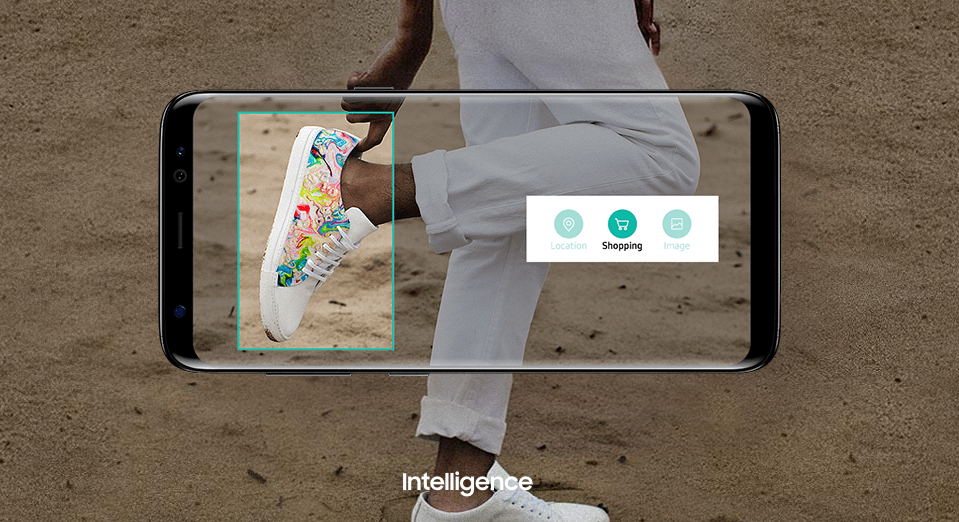What Happened
Samsung officially unveiled its digital assistant service Bixby on Wednesday with the launch of the Galaxy S8 flagship handsets at its Unpacked 2017 event (check out this VentureBeat article on all Samsung’s announcements today). Positioned as the Siri for Samsung phones, Bixby is designed to facilitate hands-free interactions in Samsung apps via voice command. At launch, Bixby only supports a handful of apps, including Samsung’s native services, but Samsung plans to release an SDK soon for developers to integrate Bixby into their apps.
That said, Bixby does come with a cool feature that few other digital assistants in market is capable of – the ability to recognize objects via the phone’s camera and surface similar images via search. When users are taking a picture with a new Galaxy S8 phone, they can tap on a small button on the camera app to evoke Bixby’s visual search feature, which leverages image recognition technology developed by Pinterest to discern the physical objects in sight and presents either similar images of the objects or information about those objects found via search. Samsung is also planning to add a shopping angle to this feature, allowing Bixby to present search results of the objects among online retail sites. This feature essentially creates a mobile-based augmented reality experience where users can point their camera at certain things to learn more about them.
What Brands Need To Do
As digital assistant get smarter, they become a gateway to introduce mainstream consumers to some advanced AI-powered solutions such as visual search and computer vision. Earlier this year, Pinterest launched a similar computer vision feature that allows users to use their phone to identify objects and search for similar images. It will also present promoted Pins in the results if the object matches with what users are looking for.
This visual search feature of Bixby enables Samsung users to quickly access digital information about physical objects in front of them via an AR-like experience, which unlocks a new way for brand marketers to serve mobile customers with tailored messages. Imagine pointing your phone’s camera at a restaurant sign and immediately find out its Yelp rating, business hours, and signature dishes. Or pointing your camera at a snack bar and let Bixby tell you about its nutrition facts and where you can buy more of it. The possibilities to bridge the physical and the digital world are endless. Therefore, brand seeking to stay ahead of the innovational curve will need to pay attention to the development of artificial intelligence and experiment with the new marketing solutions it enables.
Source: The Verge
Header image courtesy of Samsung
